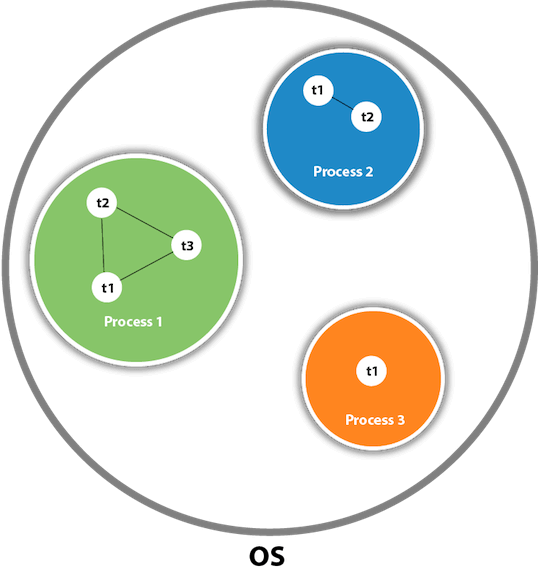Advantages of Java Multithreading
Multitasking
Multitasking is a process of executing multiple tasks simultaneously. We use multitasking to utilize the CPU. Multitasking can be achieved in two ways:
- Process-based Multitasking (Multiprocessing)
- Thread-based Multitasking (Multithreading)
1) Process-based Multitasking (Multiprocessing)
- Each process has an address in memory. In other words, each process allocates a separate memory area.
- A process is heavyweight.
- Cost of communication between the process is high.
- Switching from one process to another requires some time for saving and loading registers, memory maps, updating lists, etc.
2) Thread-based Multitasking (Multithreading)
- Threads share the same address space.
- A thread is lightweight.
- Cost of communication between the thread is low.
Note: At least one process is required for each thread.
A thread is a lightweight subprocess, the smallest unit of processing. It is a separate path of execution.
Threads are independent. If there occurs exception in one thread, it doesn't affect other threads. It uses a shared memory area.

As shown in the above figure, a thread is executed inside the process. There is context-switching between the threads. There can be multiple processes inside the OS, and one process can have multiple threads.
Note: At a time one thread is executed only.
⭐ Java Thread class
Java provides Thread class to achieve thread programming. Thread class provides and methods to create and perform operations on a thread. Thread class extends and implements Runnable interface.


0 Comments